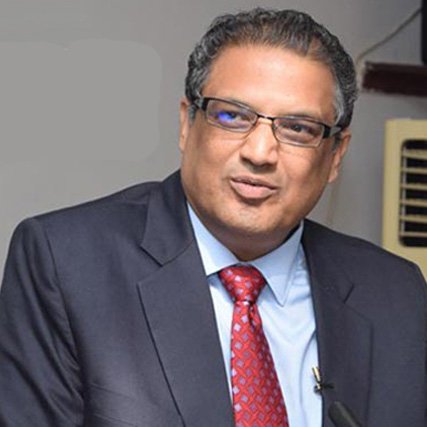We, the people of Contradictionistan, are still living in the era of French novelist Balzac. In 1835, Balzac wrote this commonly known phrase: “Behind every great fortune lies a crime.” This was the thought that even inspired judges of the Supreme Court to take support from this fictional quote to write judicial decisions. This mindset has filled people with venom of resentment and hatred against every wealthy person. Our general opinion about every big car and big house is that somewhere within that symbol of wealth, our blood is included.
This thinking aligned with the ideology of communism. Though communism no longer practically exists, the leftist mindset still lives in the form of socialism. However, in Chinese socialism, the rich, wealthy, and capitalists are not seen with hatred or envy, but with admiration. In Contradictionistan, however, the same condition still prevails. When an accident happens, everyone sympathizes with the cyclist and expresses hatred for the car owner—even if the cyclist is entirely at fault. The reason is the same: “Every rich person is a criminal.” Until this mindset changes in Contradictionistan, the growth of capital and the increase of wealth remains unlikely.
Here, it is a widespread infection that every officer declares all businessmen and industrialists to be thieves, that they all evade taxes, and that they all should be arrested and jailed. Recently, industrialists and traders have made the same complaint about the FBR (Federal Board of Revenue) to Field Marshal Syed Asim Munir.
Today’s era belongs to the economy, and the wheel of economy turns only by increasing wealth. A renowned industrialist and patron of APTMA, Gohar Ejaz’s institution, has conducted a very interesting research according to which, currently in Pakistan, there are 35 families who are billionaires in dollar terms. Among them, 15 are the same old families that were part of the former group of 22 wealthy families. From those 22, 7 families have now dropped out of the billionaire category in dollar terms, while 10 new families have joined this list. According to this research, Pakistan’s hope for progress lies with these 35 major families. No major foreign investor can come to Pakistan and compete with them. Even the multinational companies that have previously invested in Pakistan had a local partner from among these 35 rich families.
Adam Smith is considered the father of modern economics, and perhaps that’s why his image is still seen on the British 20-pound note. The essence of his philosophy is that the creation or growth of wealth is actually a social virtue: “That society is not progressing, nor can it be called prosperous, whose major portion is poor.” Thus, the financial improvement of people is nothing short of a virtue in any society.
If we consider this modern and most successful economic theory, then these 35 billionaire families in dollar terms are Pakistan’s greatest hope. But sadly, whether it’s the government’s department (FBR) or the public’s department (social media), everyone here is labeled a thief. If this constant cry of “thief, thief” continues, then it’s possible that even these 35 hopes may fly away from Contradictionistan to those green pastures where they are welcomed instead of being called robbers.
If we want to advance Adam Smith’s free economy and market economy, then these 35 billionaires should be invited and honored—told that despite an unfavorable environment, they created capital—and asked how more wealth can be generated. The actions they propose should be implemented so that wealth is created, and poverty reduced as much as possible.
In Pakistan’s history, the slogan of socialism was popular during the 1960s and 70s. During the same era, the outcry over the 22 families erupted. Dr. Mahbub ul Haq, during Ayub Khan’s rule, held these 22 families responsible for the concentration of wealth. Then, following the socialist world, Mr. Bhutto nationalized many industries, educational institutions, and commercial groups—but this experiment was not successful. Dollar and rupee are very timid; wherever they see danger, they flee. Nationalization stopped the spread of wealth. Dollar and rupee began fleeing around the world. Even now, whenever the chant of “thief, thief” is raised, the dollar flees to Dubai, sometimes to London, sometimes to America, and sometimes to Europe.
It’s a strange matter that the flight of dollar and rupee happens due to fear, but bringing them back is equivalent to bringing a stream from the mountains. It is the government’s job to create ease for dollar and rupee, remove fear, so that at the very least, these 35 billionaire families can expand their investment within Pakistan. And if foreign investment is to be attracted, it will come through them—just like when the domesticated pigeons are eating grain at home, the wild pigeons too take shelter on the same roof through their support.
The ideology of social democracy was very close to Benazir Bhutto’s heart. This ideology emphasizes public welfare along with market economy. In today’s capitalist world, alongside market economy, the role of governments is to create policies for free capital, and at the same time, to arrange for the elimination of monopoly and cartelization.
In America, this flaw entered free market in the early 20th century, when major industrialists and tycoons, by forming alliances, created monopolies and unfair groupings to extract excessive profits from common people. Although the law permits competition, it discourages monopoly. In the 1920s, the U.S. Congress passed strict laws against monopoly and cartelization.
In Pakistan, alongside encouraging capitalism, the strict enforcement of governmental competition policies is also necessary—so that new billionaires and millionaires are created and the concentration of wealth does not remain within the same old families. When only a few families are rich, and the masses are poor, revolution arrives. But if the number of rich people keeps growing, and the number of poor decreases, then the state gradually becomes welfare-oriented.
 Colors
Colors  View Books
View Books 


